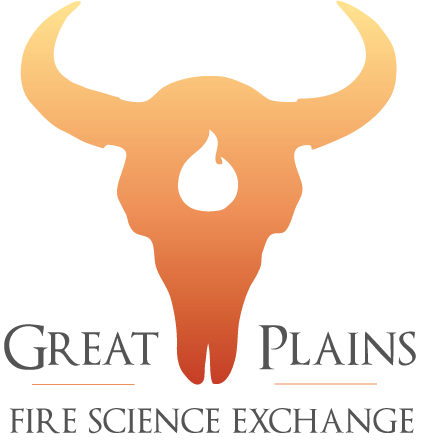Great Plains Published
This recent survey summarizes the activity, needs, and safety records of 27 Prescribed Burn Associations (PBAs) in the Great Plains. Take a look through this valuable and relevant information; it’s well worth your time.
2015-06
Read MoreRead our summary of recent research identifying and comparing elements of traditional fire knowledge across cultures throughout history.
Read MoreWritten by Sherry A. Leis
Diversity. In natural resource management, diversity is often thought of as a desirable concept or condition. At various scales, defined or desired levels of species diversity may result in stable, resilient, and healthy communities (Symstad and Jonas 2011, Tilman et al. 1998). Diversity may also be critical for the provision of certain ecosystem services and non-biological processes such as movement of water or soil nutrients or abiotic features altering fire intensity.
In the realm of fire, we talk about diversity in the timing of fire, selection of ignition techniques, fire intensity, and fire frequency. Balancing fire diversity with other management goals can be difficult. Often, we talk about maintenance verses restoration modes; each has its own priority management actions. The restoration mode is a suite of management actions to move a sub-optimal grassland ecosystem towards what can seem like a fabled maintenance condition.
In the realm of human communities, diversity is a goal for institutions and organizations. The debate on how much and in what context is ongoing in institutions, communities, and politics nationally.
The Great Plains Fire Science Exchange has also been learning about the diversity of the fire community in the Central North American prairies. We have always known that everyone from the private landowner to the federal fire service plays an important role in our community. We have seen an increase in previously isolated members of the fire community working together to solve problems and achieve goals. The increase in burned acres (Melvin 2015) and burn associations in the region are examples of this (Weir et al. 2015). More recently we began learning about the diversity among American Indian members of the community and how they use fire. In much of the region, people with tribal affiliations are very integrated with society at large. These are people we interact with every day and may not even have knowledge of their heritage. They are using fire on ranches, leading extension programs, and are part of the state or federal fire services. There are also additional American Indians living on or near reservations. Some of these communities maintain their own local fire services and traditional uses of fire.
There are native smoke jumpers and hotshot crews, Bureau of Indian Affairs fuels specialists, and fire fighters of diverse backgrounds. As we learn more about how this group in our community uses and values wildland fire, we hope to also learn what types of information we might have that would be of value to them. We have certainly learned a lot about the Great Plains fire community over the last four years, but know that we have only scratched the surface. The more we learn about your fire interests and needs, the better service we can provide to the whole Plains. Diversity really does make for a better world.
References
Melvin, M.A. 2015. National prescribed fire use survey report. Technical Report 02-15, Coalition of Prescribed Fire Councils, Inc.
Symstad, A. J., and J. L. Jonas. 2011. Incorporating Biodiversity Into Rangeland Health: Plant Species Richness and Diversity in Great Plains Grasslands. Rangeland Ecology & Management 64:555-572.
Tilman, D., C. L. Lehman, and C. E. Bristow. 1998. Diversity-stability relationships: statistical inevitability or ecological consequence? The American Naturalist 151:277-282.
Weir, J., D, Twidwell, and C.L. Wonkka. 2015. Prescribed Burn Association Activity, Needs, and Safety Record: a survey of the Great Plains 2015‐6.
Read MorePrescribed fire affects wildlife in various ways. Population responses by species can be positive, negative, or neutral, short-term or long-term, and they often vary across spatial scales. Whereas prescribed fire can create or maintain habitats for some species, it can also remove or alter conditions in ways that render it unsuitable for other species. Furthermore, a species may benefit from fire in one situation but not another. Given the variations in fire and in species responses, the only real generalization one can make is that exceptions occur.
Read MoreAs redcedar encroaches and increases in canopy cover, species diversity that is endemic to grasslands collapses and production of herbaceous biomass (forage) underneath decreases, resulting in a loss of livestock carrying capacity (Smith and Stubbendieck 1990; Engle et al. 1987; Limb et al. 2010; Twidwell et al. 2013a).
Read MoreThe “cut and stuff” practice is an addition of ladder fuels that can increase fire intensity and create longer flames needed to control larger trees, thus increasing the overall effectiveness of most prescribed burns.
Read MoreThe Great Plains of North America has experienced exponential increases in wildfires since 1985, with a 400% increase in area burned and more than 300% increase in number of wildfires.
2017-01
Read MoreThe Great Plains of the US is characterized by grassland communities. Fire plays an important role in maintaining these grasslands. However, it has been difficult to understand how much fire occurs in the Great Plains and how fire occurrence might vary across the region.
2018-02
Read MoreThe vegetation patterns and succession of Great Plains grasslands are structured largely by fire. We can see how important fire is to these grasslands by its exclusion, in as little as 40 years tallgrass prairie without fire can become a woodland.
Read MoreAn open discussion from the Fire Summit 2016 moderated by John Wier and Bryan Hays.
Read More
